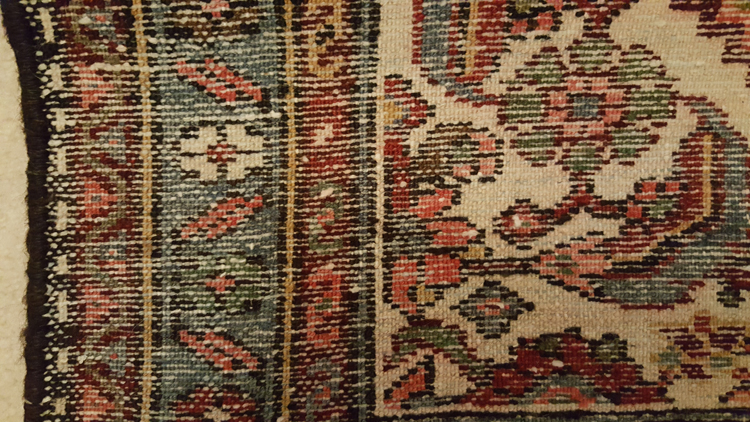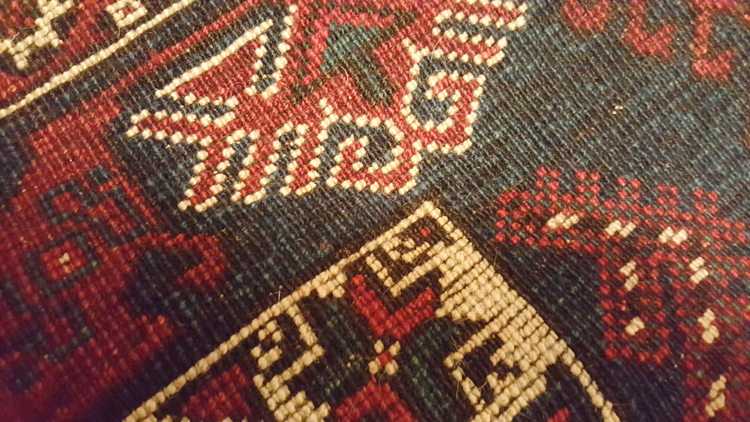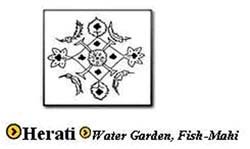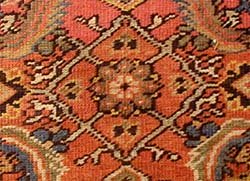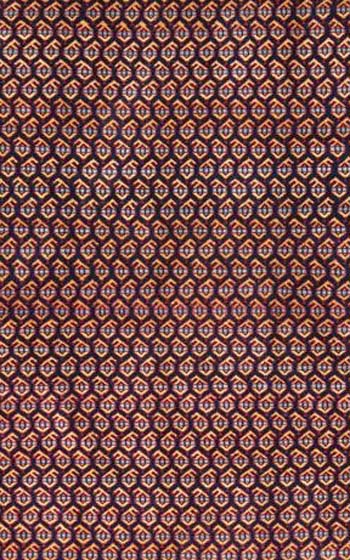HAMADAN RUGS
FROM IRAN
Hamadan rugs come from the Persian villages in the mountainous Hamadan region in western Iran. The region is the home to hundreds of villages. Each village has its own weaving tradition which determines the exact design patterns used.
The names for most of the rugs of this region come from the area where they originated. The finest rugs from these areas are sold under their own names. The simpler rugs share the generic term of Hamadan.
Please see Hamadan Rugs Area for more in depth information and explanation of terms.
ELEMENTS OF HAMADAN RUGS
LOOM
The rugs are usually woven on vertical looms without the use of cartoons for patterns.
FOUNDATION
The foundation of these rugs today is cotton, but earlier Hamadans (before 1915) had wool foundations, usually on a camel-colored background.
Except for the Hamadan rug from the Kasvin area, Hamadan foundations are single-wefted. The back of a single-wefted rug features every other warp exposed across the width of the rug giving a distinctive pattern of easily defined lines across the rug. (The wefts are the foundation cords from left to right.)
KNOT
The knot used is the Turkish or Ghiordes knot, a symmetrical knot. The Persian Tabriz rugs also use this knot. This may seem strange since most Persian rugs use the Persian or asymmetrical knot.
This can be explained because Tabriz is located very near Hamadan and was once the capital of the Ottoman (Turkish) Empire. The predominant population is Turkic people. Therefore both the rugs woven in the Tabriz and Hamadan areas use the Turkish or symmetrical knot, not the Persian or asymmetrical knot. (There is a very rare Turkbaff Meshed rug that still uses the symmetrical knot.)
Camel hair can sometimes be used for the pile. When wool is used it ranges from coarse to medium in quality.
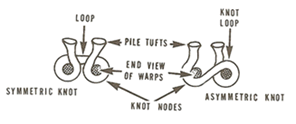
COLORS
The color palette of almost all of the rugs from this region includes
the primary colors with backgrounds of ivory, red, blue, or brown. They are usually very colorful.
SIZES
Village rugs such as those from the Hamadan region are woven in utilitarian sizes (smaller sizes and runners). Room-size rugs, however, can be found among the weavings of the Bibikibad and Kaputarahang villages.
ENDS
A distinguishing feature of many the rugs from the Hamadan area is the weaving of a narrow selvedge or kilim at the bottom of the rug with a plain fringe at the top of the rug.
SIDES
The sides are usually overcast in wool with a single cord.
DESIGNS
The designs of these rugs can be rectilinear (mostly geometric motifs and angular patterns) or curvilinear (mostly more intricate floral motifs and patterns) and some can have both elements. Most Hamadan rugs are rectilinear.
Listed below are some common elements that can be found in these rugs. Some variation of an oak leaf can also be seen as a common element in these rugs.
HERATI DESIGN
The Herati pattern, named for the Village of Herat, was very prevalent before WWII.
The Herati is formed by a rosette surrounded by a diamond with small palmettes at its points. Curving, tapered, serrated leaves that resemble fish (mahi) finish the design.
BOTEH DESIGN
Some form of Boteh design is common as well. This is a hooked paisley design which is usually found as a repeated or all-over design.

SERABAND or MIR DESIGN
This is a characteristic pattern (known commercially as the mīr
design) of small, complex leaf (boteh) or leaf forms in diagonal rows,
their tips pointed alternately in opposite directions.
The Hamadan Rugs Area and the Rugs
For more detailed information including photos, please see Hamadan Rugs Area.
"The Cleanest Clean You've Ever Seen."
by
ABC Oriental Rug & Carpet Cleaning Co.
130 Cecil Malone Drive Ithaca, NY 14850
607-272-1566

ABC
Carpet & Rug
Spotting Guide
Oriental and Area Rug Washing at ABC Oriental Rug
Rugs on the wash floor are gently scrubbed before thorough rinsing.
Gentle scrubbing continues. Note the wringer in the background-the next step in the washing process after rinsing.
After thorough rinsing, the rug is sent slowly and carefully through the wringer to take out as much of the water as possible before being hung on racks in the drying room.
Rugs are hung on a rack in the temperature controlled drying room until completely dry.
